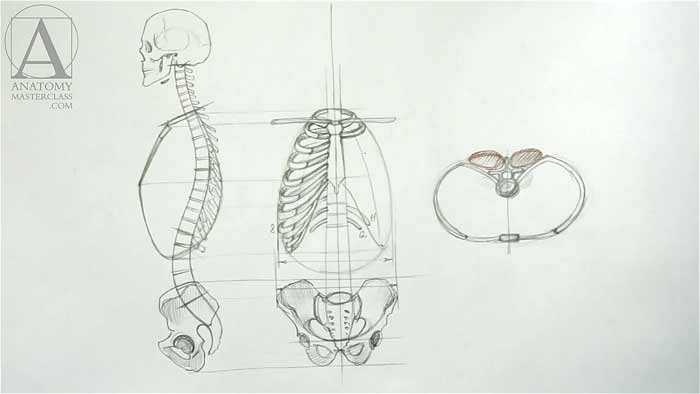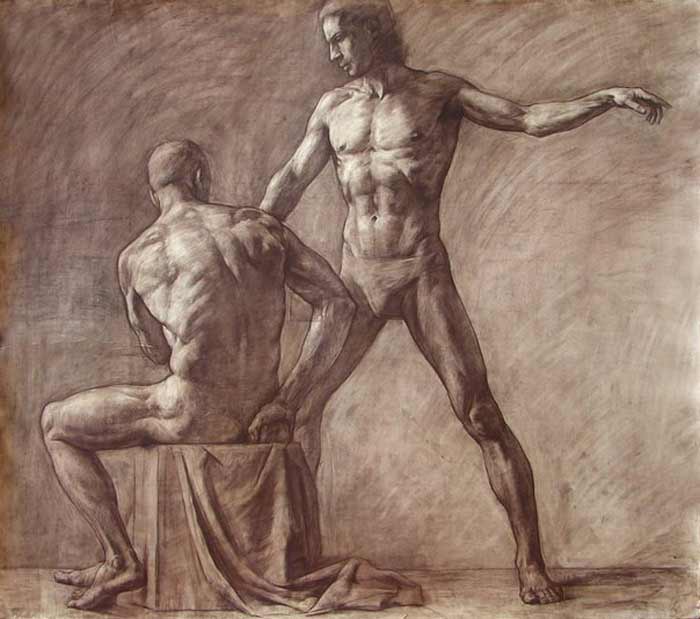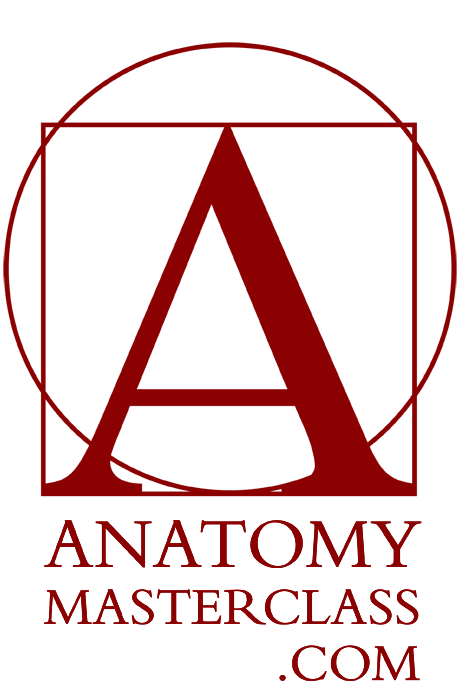Human Torso Anatomy
Human Torso Anatomy
Anatomy Lesson 7 – Part 1
In this video lesson you will discover the human torso anatomy.
How to Draw a Human Torso
When viewed from the side, the human spine has a double curve, like the letter “S.” It grows thicker as it runs from top to bottom and can be divided into four parts. Each part has its own curvature.
The top-most part is the neck region, or cervical spine. The next part is the ribcage, also called the thorax, or the thoracic spine. The next part down is in the waist area, also called the lumbar region. The lowest part is closest to the pelvis, or the sacral region.
The cervical region of the spine has seven vertebrae, the thoracic region of the spine has twelve vertebrae, and the lumbar region of the spine has five vertebrae.



Between each vertebra of the spine there is a disc, which makes the spine flexible so that it can bend in various directions and also rotate.
The pelvic part of the spine has fused vertebrae, so we will draw it as a single shape.
In the front of the thoracic region is the breastbone. It narrows towards its lower end.
The human skull connects to the body via the first vertebra at the top of the spine.
This vertebra is called the atlas. This name is derived from the mythological titan who, according to Greek mythology, was held the heavenly sphere on his shoulders.
The joint between the first vertebrae and the skull allows the head to move forward and backward.
The second vertebra is called the axis. Its anatomical construction allows the head to rotate to the left and to the right.
In the pelvis anatomy, the wide pelvic bone, which is connected to the sacrum, is called the ilium. The top ridge of this bone can also be referred to as the iliac crest. The bagel-shaped bone at the lower part of the pelvis is called the ischium. This is the sitting bone. Another important part of the pelvis is the acetabulum, which is the socket of the hip joint.
In the human torso anatomy, the breastbone is called the sternum. The top part of this bone is called the manubrium.
It might help to think of the breastbone as a necktie, or perhaps as a sword with the blade pointing downward. The length of the breastbone is equal to the length of the collarbone.
Just below the collarbones, the first pair of ribs is attached to the breastbone. This pair defines the base of the neck and is as wide as the neck itself.
The second pair of ribs is connected to the breastbone at the point where the manubrium connects to the sternum. The second pair is wider than the first one. You may notice that the second pair of ribs angles out from the sternum almost horizontally.
The third, fourth, fifth, sixth, and seventh pairs of ribs leave the sternum pointing in a more downward direction.
The first seven pairs of ribs are called “true” ribs, because they are connected to the breastbone.
Every subsequent pair of ribs is wider than the previous one. That is why the ribcage becomes wider, following an egg-shaped contour.
The eighth, ninth and tenth pairs of ribs are sometimes referred to as “false” ribs, because they do not attach to the breastbone. Instead, they are each connected to the previous pair of ribs.
The eighth pair of ribs is attached to the seventh pair, the ninth pair to the eighth, and the tenth to the ninth.
There are two more pairs of ribs in the ribcage beyond these so-called false ribs- the eleventh and twelfth pairs. They are referred to as “floating” ribs, because they do not connect to the previous pair of ribs, and they just float inside of the human body.
In the front, between the breastbone and the bony part of the ribcage, is a softer part of the ribcage called costal cartilage. This cartilage is the connecting tissue between the breastbone itself and the bony part of each rib.
The hip joints and the pubic bone are on the same plane.
The sacrum of the pelvis consists of five vertebrae fused together.
[ The full lesson is avaibale to Anatomy Master Class members ]
To learn more about the human torso anatomy, enroll in the Anatomy Master Class
Simple Pricing, No Surprises
One-time payment - Only $97 USD
ENROLL NOW



